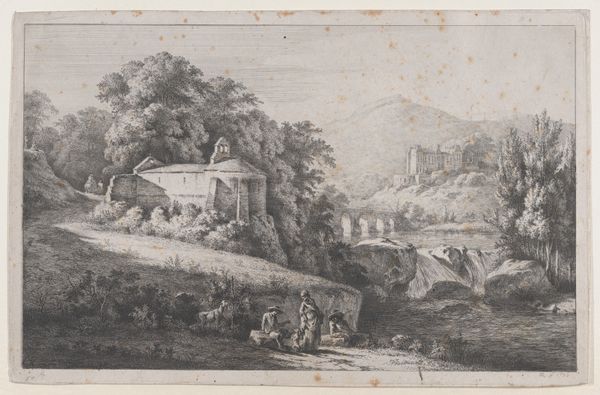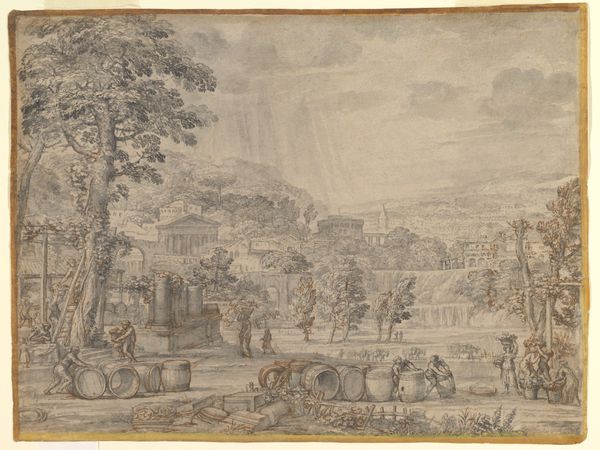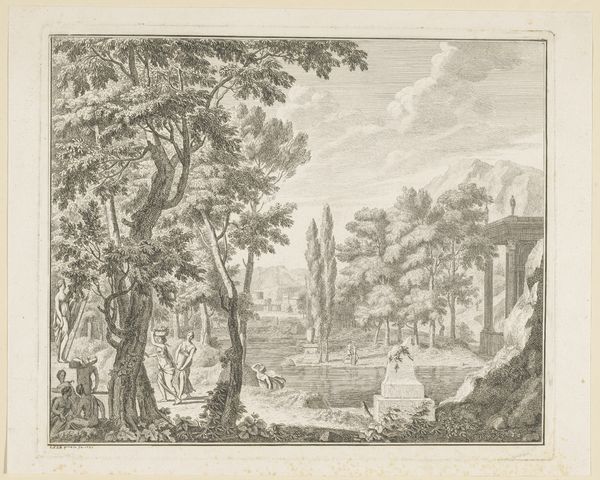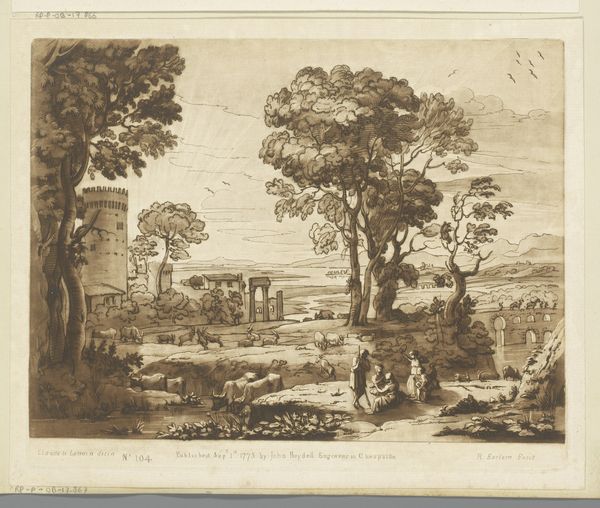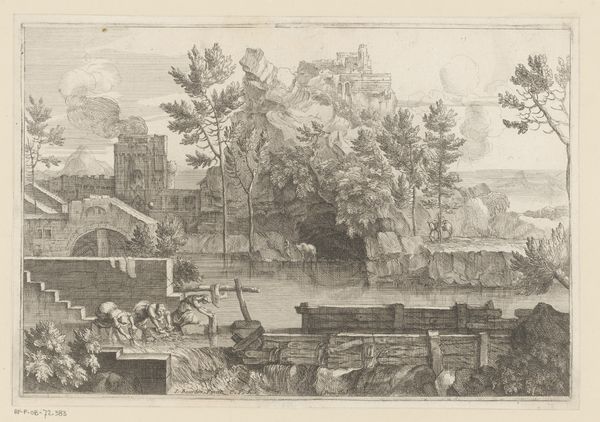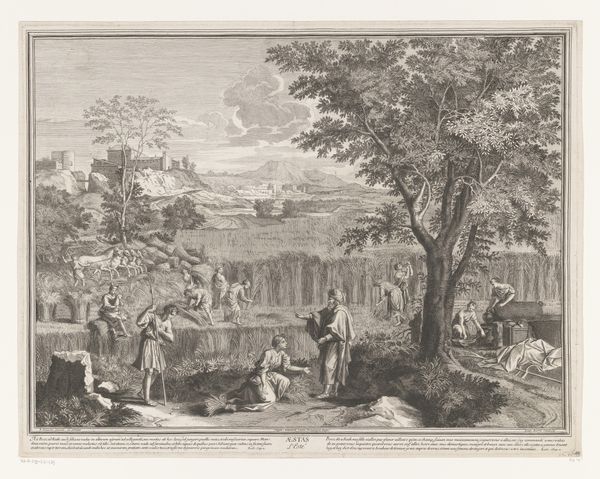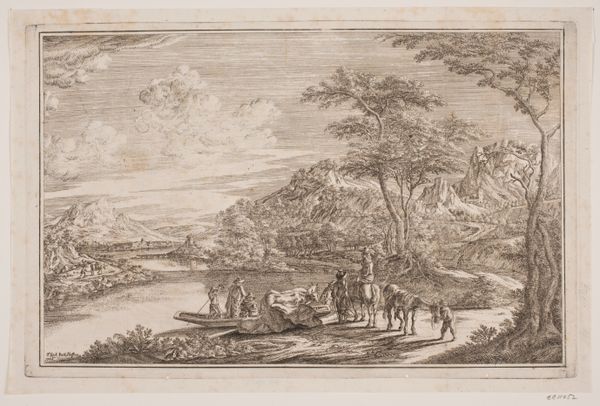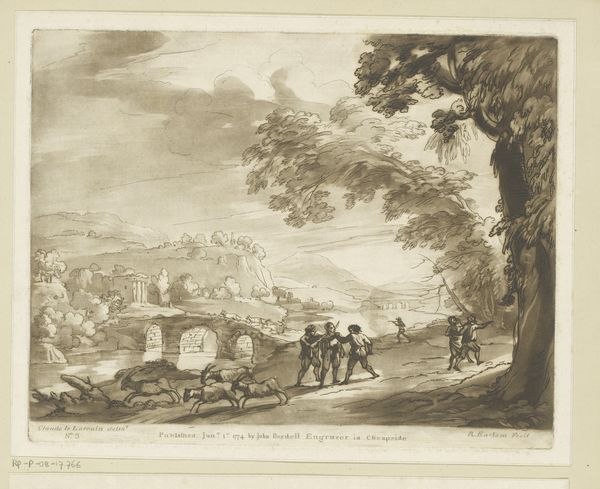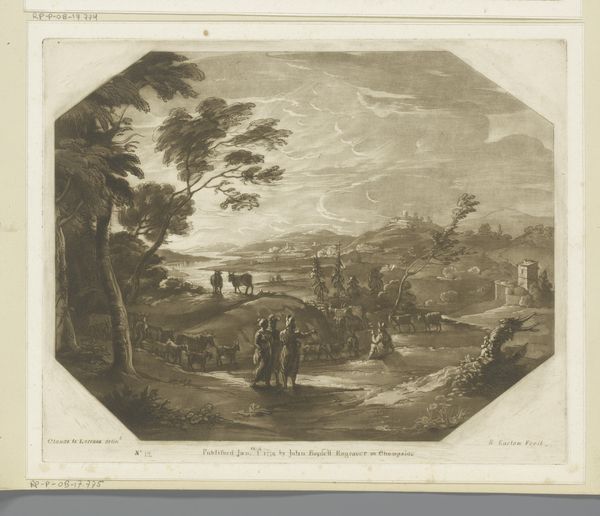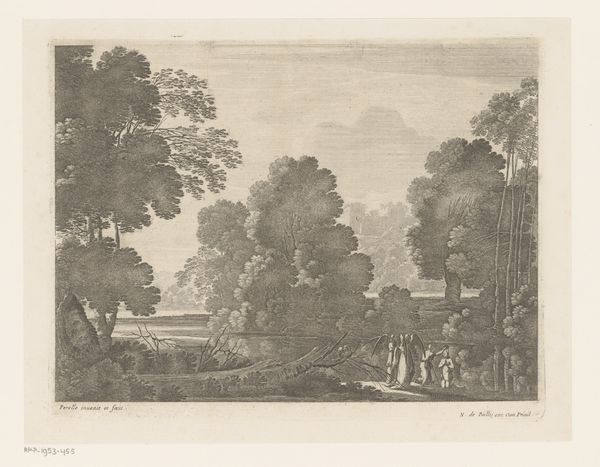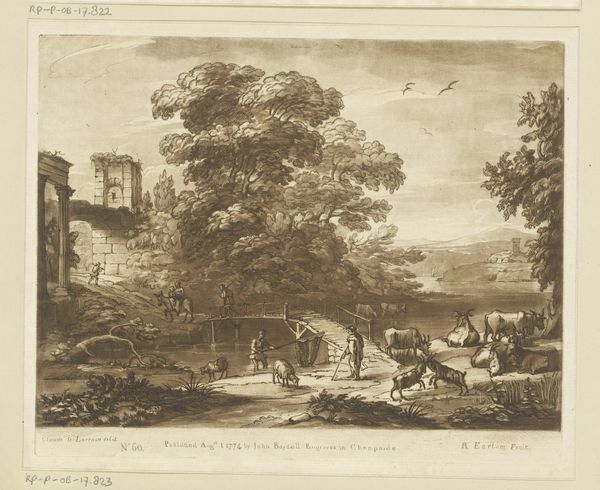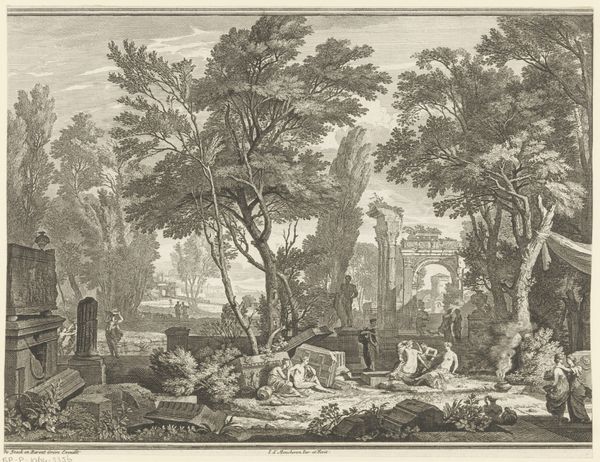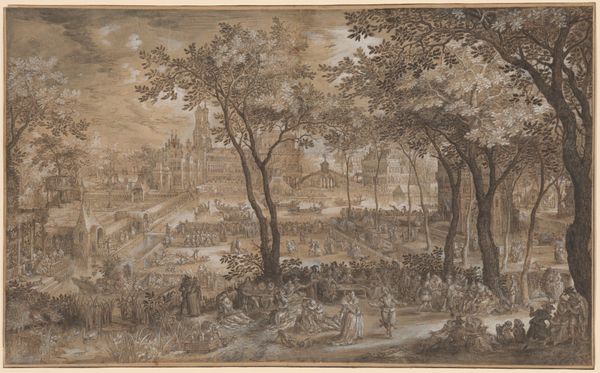
Palazzo of the Villa d’Este in Tivoli, Seen from the Fontana dell’Ovato c. 1783 - 1784
0:00
0:00
drawing, watercolor
#
drawing
#
neoclacissism
#
landscape
#
watercolor
#
cityscape
#
watercolour illustration
Dimensions: height 478 mm, width 694 mm
Copyright: Rijks Museum: Open Domain
Curator: This is Francesco Piranesi's "Palazzo of the Villa d’Este in Tivoli, Seen from the Fontana dell’Ovato," created around 1783-1784. It's currently held at the Rijksmuseum. Editor: My first thought is how masterfully Piranesi captured a sense of depth. The composition seems designed to lure the eye deeper and deeper into the scene, from the throng of figures to the architectural vista beyond. Curator: Absolutely, and consider what the Villa d’Este represented during that period. As a Mannerist-era creation commissioned by Cardinal Ippolito d’Este, it embodied a synthesis of nature, artifice, and power. This drawing offers insight into the lives of people who lived near or who would visit this site. Editor: Note how he utilizes a limited palette to build atmospheric perspective, with delicate washes suggesting distance and fading light. It gives the whole scene a hazy, dreamlike quality. It’s very romantic. Curator: This romantic sensibility should also be read alongside Neoclassical principles that were influential at the time. It’s all about reinterpreting classical forms within the visual and political culture. Editor: What is intriguing about the architecture in the work is how it serves to frame a larger humanist sentiment: how nature should relate to man, not the other way around. The architecture serves the natural landscape, and it's not the reverse. Curator: It also embodies a crucial shift toward valuing historical preservation. The popularity of travel and “grand tours” meant that ancient structures and ruins were being reimagined as objects of cultural worth and public interest. Piranesi was also instrumental in popularizing images of ancient sites, and disseminating new knowledge on their historic and ongoing existence. Editor: The rendering of light is extraordinary—almost Turneresque in its evocative use of shadow. The eye is not given to clear and defined details but led into an ambient mood and compositional feeling of the Italian site. Curator: His delicate technique emphasizes the intersection of human construction and the ever-encroaching power of the natural world—revealing larger forces about human identity. The way the vegetation seems to assert itself around these ruins becomes an allegorical statement about civilization and time. Editor: Indeed. Looking closely at how those washes define form and space gives a great lesson on capturing atmosphere. Curator: I agree. Piranesi invites us to consider both the legacy of this iconic destination and the social changes taking place during its continued use as a space to foster humanist philosophies.
Comments
rijksmuseum about 2 years ago
⋮
Built in the 16th century by Cardinal Ippolito d’Este, the Villa d’Este was renowned for its landscaped gardens. Desprez drew the left part of this view on the spot. When Piranesi made this etching of it, he extended the scene to the right and included the group of people under the trees. Bathed in a golden light, the architectural backdrop towers majestically above the garden.
Join the conversation
Join millions of artists and users on Artera today and experience the ultimate creative platform.
